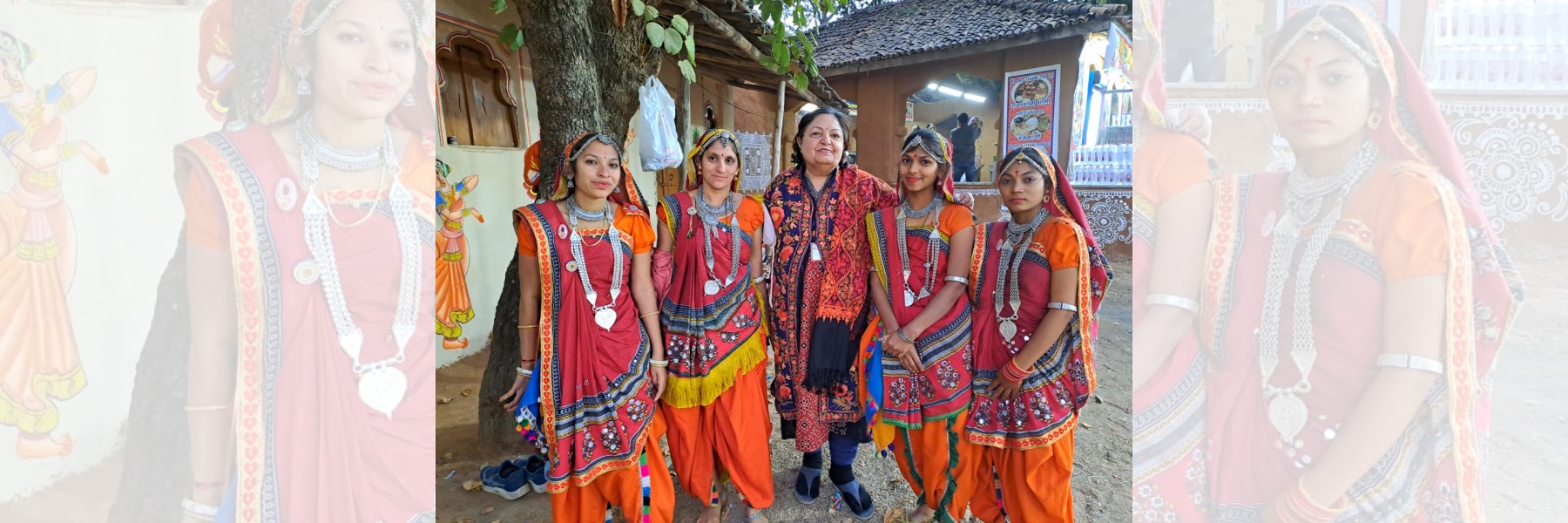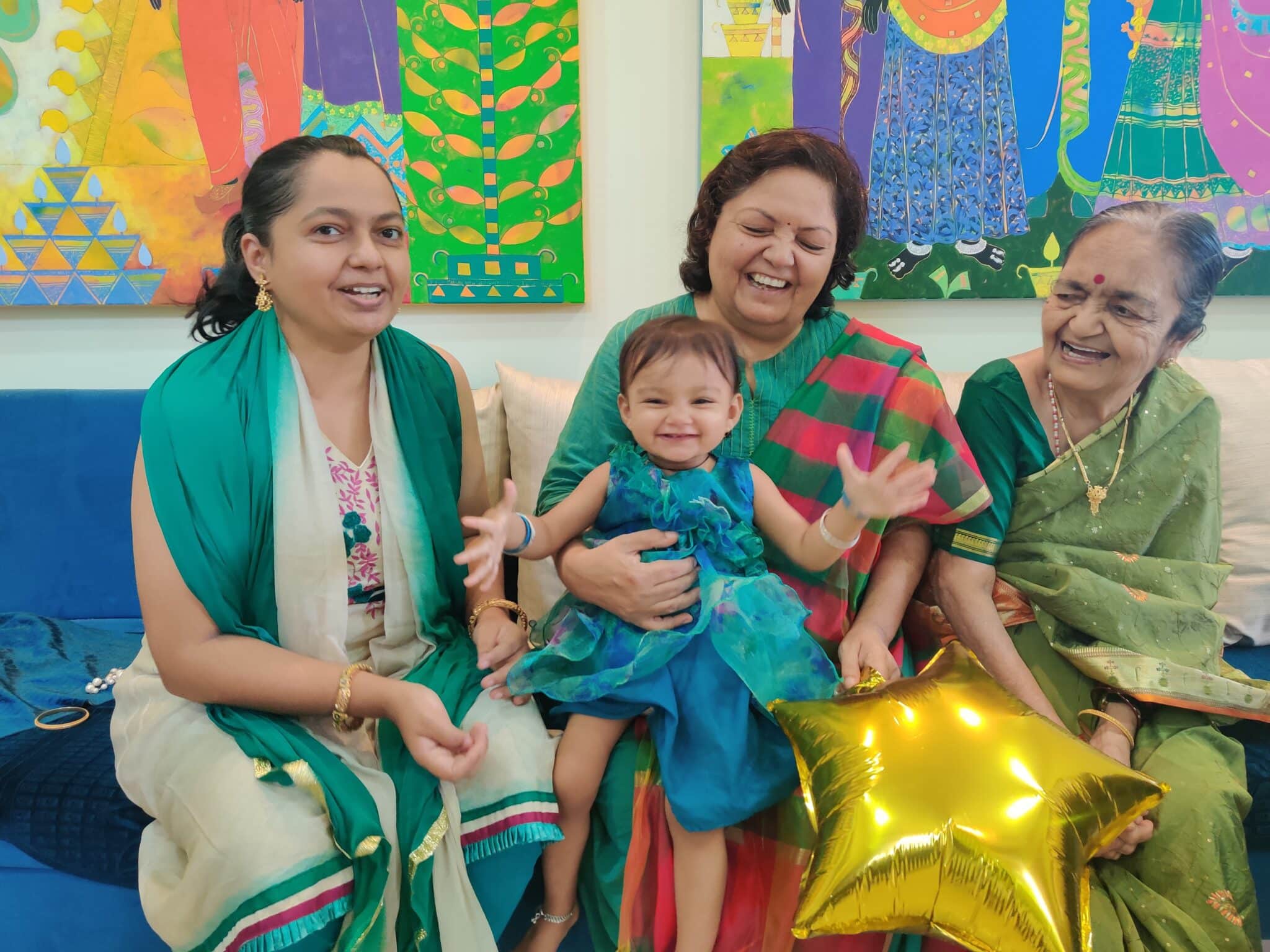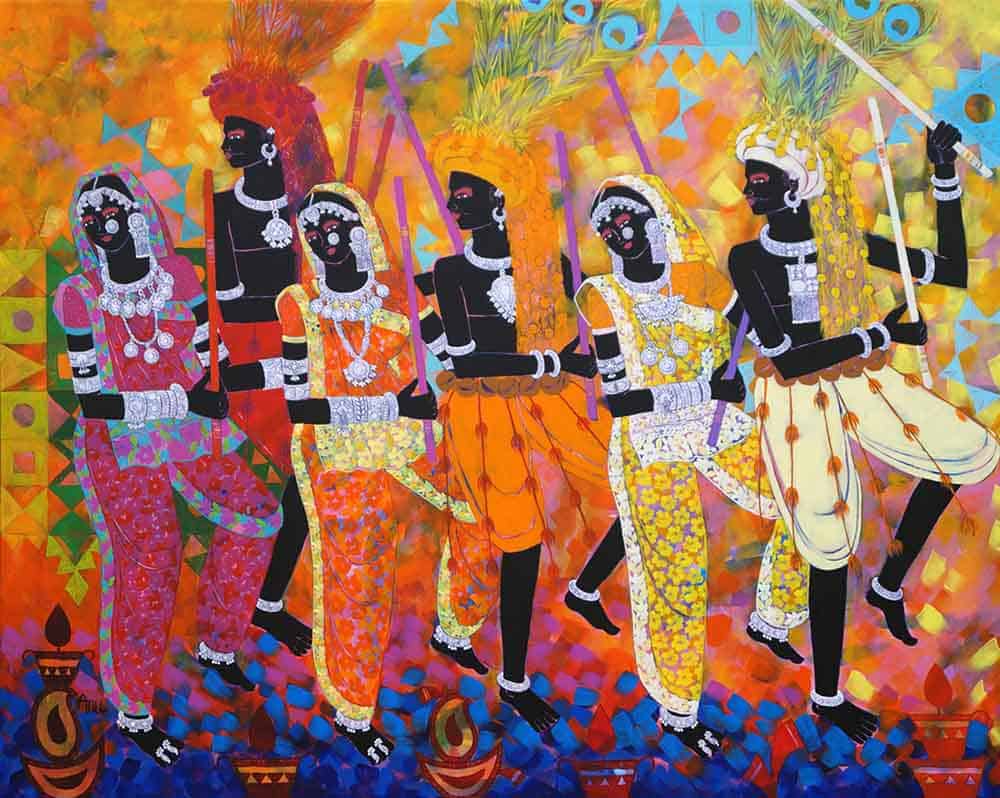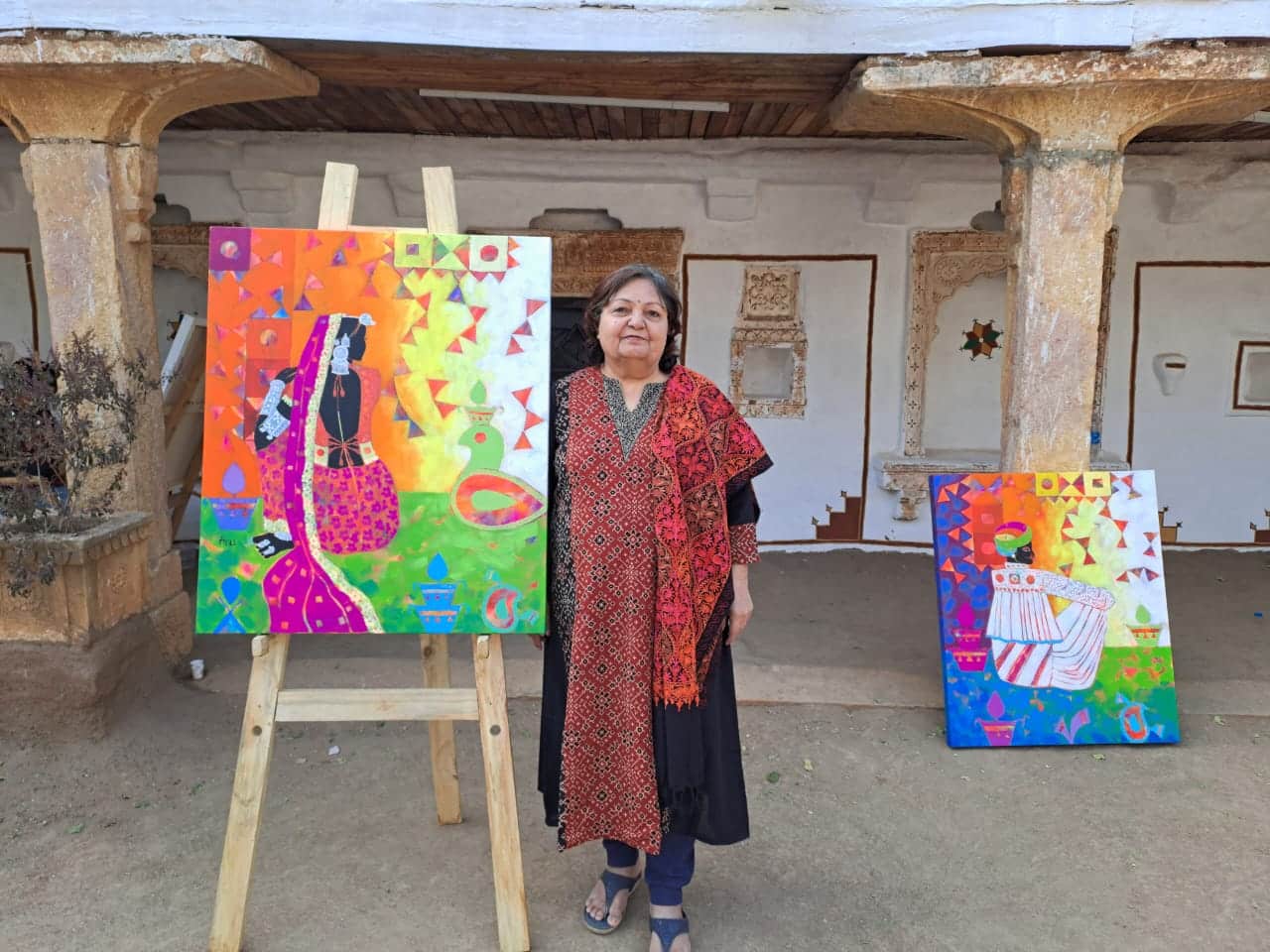
WHY ARTIST ANURADHA THAKUR USES BLACK IN HER PAINTINGS
Artist Anuradha Thakur‘s paintings of Indian tribal life are a burst of color and joy. Yet, she is known for the stark contrast between the vibrant color palette of her canvases and the deep black color of her subjects. Many clients are struck by the beauty of Anuradha’s work and always intrigued by the choice of black.
Although Anuradha has previously spoken about the symbolism of black in her paintings in a TEDx talk at BITS Hyderabad, I asked her if she would write more about how black originated in her works. In her own words below, she recalls working with a nonprofit for twenty years before becoming an artist, and how the color black captures the inner strength and positivity of tribals.

Why I Use Black in My Paintings of Tribal Life
by Anuradha Thakur
After graduating from art school, I met the director of an NGO located at Aurangabad. He showed keen interest in my sketches and invited me to draw some illustrations for the NGO’s publications, as well as conduct art and craft workshops for rural people. While conducting rangoli workshops with the NGOs, I came out with the results that rural adolescent girls built their self-confidence and improved society’s respect towards them. I continued to use art as a medium for development in rural communities during my two decades of work with the NGOs, and although I received an award from the State Educational Board, my true prize was seeing self-confidence grow among the children.

As I was moving from place to place conducting workshops, I got an opportunity to conduct a workshop for the children of the Gond community from Gadchiroli tribal area. There, I observed teenage boys and girls mingling freely and interacting with each other. I felt worried about their behavior, but someone informed me that parents need not worry if a boy and girl fall in love with each other. It is a striking truth that they never cheat. They may live together and have children without marriage — it is very common to see their children attend their marriages. Such a pure example of honesty and loyalty is rare in this world, it was shocking to me!
I was so inspired that I actually put a paintbrush to canvas after almost 22 years since my graduation. I wanted to depict the harmony of honesty, loyalty and rhythm of tribal life. While we worry about collecting material wealth, these villagers spend their time collecting moments of happiness. Even though they live in adverse conditions, they always celebrate the riches in their life.
I used the color black to highlight these aspects. Black is pure. Black is honest. Black is not an artificial bright. The characters in my paintings are black, but they are never sad. In fact, I always show my characters happy and celebrating their lives. My black is not harsh – it is a soft black.
Black is a very heavy color. With even a single incorrect stroke, an entire painting can be ruined. That is why one needs a very clear and transparent mind to work with black color. There should also be a sense of courage within the artist’s mind. Using black had always seemed to be a challenge for me, but once I connected with the transparency and clarity of these tribals, black came naturally and easily onto my canvas.

Witnessing tribal life flourishing amongst nature that day in Gadchiroli is imprinted in autumn’s harmony on my canvas. That experience enriched built in me an urge to unravel new communities, from the dry and cracked landscape of Kutch — where I saw the precise harmony within the contrast between the tribals’ colorful lives and the barren terrain — to the lush forests of Madhya Pradesh — where I learned that even in a dark hut, shades of culture could be seen. My travels to tribes across India have enriched me to the brim.
For instance, when I visited the festival of Bagoria, I saw a host of young people dressed in vibrant shades and ornamented unendingly. They were celebrating Holi while also choosing their life partners. I was so thrilled that my brush could bravely and freely unleash many shades uncompromisingly, capturing this scene. This uproar of colors marched in a rhythm representing the beauty of the tribes. Though many hues entered my canvas, black never lost its luster.

This coexistence of colors in my paintings further represents the soulful relationship between nature and the many tribes and cultures of our land. My experiences taught me that nature has a rhythm of its own. Nature is raw and wild, yet it is also honest and orderly. And these communities living in the midst of nature reflect a vibrant life which cannot be found in the concrete jungles of cities. They flow with this rhythm of nature, and I represent this on my canvas. Each land in which I opened my eyes, I found that there was no color misplaced, and I saw man and nature living in peace and amity, complementary to each other.
Ultimately, I have found great symphony in the tribal areas. This is not about their simple living; it is about their oneness with nature and each other. It is about living and letting others live. This essence is what makes my art alive, and my paintings are and will always be a tribute to these people I admire.

Leave a Reply
You must be logged in to post a comment.